Full integration within DMXzone Server Connect
Thanks to the great integration of DMXzone Database Updater within DMXzone Server Connect you can easily insert/delete/update one or multiple records in your database.

Database Updater Action Builder
The Database Updater Action Builder lets you visually define any database update action. A database action defines a single global action for your site that executes a record insert, update or delete. You can have as many database actions as you wish and you can reuse them on multiple pages. Each database action just defines the database table it is operating on, which columns receive values and if any filters are applied for record selection. Database actions are executed by the so called Database Action Executors fully thought AJAX , so that you can execute them without any page refresh!
- Insert record - Use the insert type of action to insert new records into a database table.

- Update record - Use the update type of action to update existing records in a database table. You can also update multiple records.

- Delete record - Use the delete type of action to delete rows in a database table. You can also delete multiple records.

- Manage connections - The Database Updater Action Builder allows you to create and manage connections to servers with the DMXzone Database Connection wizard dialog.

- Easy table and column pickup - You can quickly add your table to be listed in the columns pickup view. From there you can choose the columns to be populate with data and filters to be used.

- Add, duplicate and remove database actions - In the action wizard you can add as many actions as you want, delete or duplicate them.

- Add and remove database table - From the table manager you may add or remove a database table to pickup columns from.

- Column values - Select the columns of your table that should be updated with new values. You can use the following sources:
- POST variable - Fields data submitted from your page with Database Action Executor or regular post request
- Entered value - Entered value defines a static value.
- URL parameter - Parameter passed in the page query string
- Cookie - Stores retrieved cookie values.
- Session variable - You can
use session variables to store and display information maintained for
the duration of a user’s visit (or session). The server creates a
different session object for each user and maintains it for a set
period of time or until the object is explicitly terminated.
- Application variable - In ASP you can use application variables to store and display information that is maintained for the lifetime of the application and persists from user to user. After you define the application variable, you can use its value in a page.

- Records filtering conditions - The filters list contains conditions that are applied to database action when executed. There are basic conditions like =, <, > as well as advanced, such as contains, begins with, ends with and between. This way you can limit the database action to specific records. You can use the same value sources as with column values.

- Required fields - You can check mark any column or filter that is required to have a value.

Database Updater Action Executor
Database Action Executors let you run a database action with specific data assigned. So if you have defined to use a database action to update your database table columns, now with the Database Action Executor you can assign the values for those columns. That is why you define a database action globally to your site, so it can be reused, but define a specific executor on your current page where your data is in for example some form with fields.
- Assign the data for the Database Action - Quickly choose an already defined Database Action or create a new one and then just assign the data source for its columns and/or filters.

- Easy data bindings pickup - Just select data source field from the available data bindings, displayed in the data bindings tree left and assign it to the corresponding database column field or filter, on the right, that is defined for the selected Database Action.

- Add, duplicate and remove database executors - In the executor wizard you can add as many executors as you want, delete or duplicate them.

- Quickly assign Database Action filter values - If you have defined to use a database action to update or delete records from your database based on a filter, you can now assign values for this filter.

- Full support for HTML5 Data Bindings Formatter - If you have the HTML5 Data Bindings Formatter extension installed you can get the power of the 47 supplied formatting filters, directly in your Database Updater Action Executor wizard dialog.


- Execute asynchronous - You can enable the asynchronous execute of the Database Action so that the user browser is not blocked while the action executes! This gives you the best user experience.

- Display alert errors - An alert message has been displayed when the action is not executed properly.

- Database Updater behaviors
- If you want to execute follow up action and/or behaviors depending
on the result of you database action you can use our Behavior Connector
to bind to the right events.

- Before the action is executed
- This event is fired before the action is executed. For example, you
can show here a preloader or a message that the action is being executed
now. Also, you can use this event for extra validation.
- When the action is finished
- The event is fired when the action is done, successfully or with an
error. This is the place to hide your preloaders as the call for data is
finished. After this you can even execute others depending if data was
successfully received or an error has occurred.
- When the action is successfully executed
- This event is fired when the action is successfully executed. You can
show a success message here that the action was executed successfully.
Also you can set to refresh your data to see the changes, without
refreshing the page.
- When an error has occurred
- This event is fired when an error has occurred during the data fetch.
You can show an error message here that the action has failed.

Control Database Action Executor Behavior
After defining your Database Update Action and assigning data to it with the Database Action Executor, you are now ready to run it! This is where the Control Database Action Executor behavior comes in place. Just like any other behavior you can add to a specific event like click on a button or link to trigger the executor to runs its database action! You can even add the behavior through the Behavior Connector so the action executes for example as a follow action on a different database action or event from other DMXzone extensions.
- Control DMXzone Database Action Executor - Once your database actions are defined with assigned data to them, you need the control database action executor behavior in order to run them.

- Choose one of the available events - You can add to a specific event like click on a button or link to trigger the executor.

- Run your Database Action through the DMXzone Behavior Connector - You can use the DMXzone Behavior Connector to run your database action as a follow up action.

- Control DMXzone Database Action Executor Actions- The available actions in the Control DMXzone Database Action Executor are run and abort that you can choose from.

- Run the DMXzone Database Action Executor - Once you select the run action it triggers the selected Database Action Executor.

- Abort the DMXzone Database Action Executor - You can apply the abort action for certain executor for example in case a validation fails.

- Data override - It allows you to override the existing data setting such as value for insert, and value and filters for update/delete.






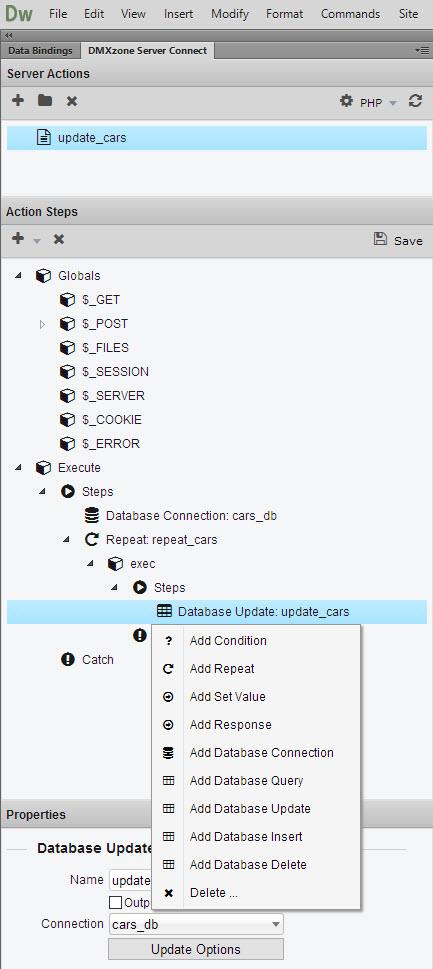

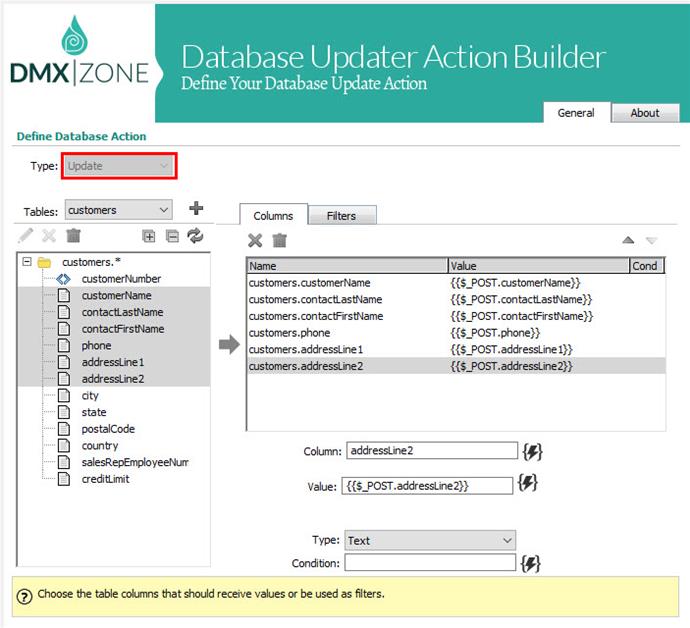
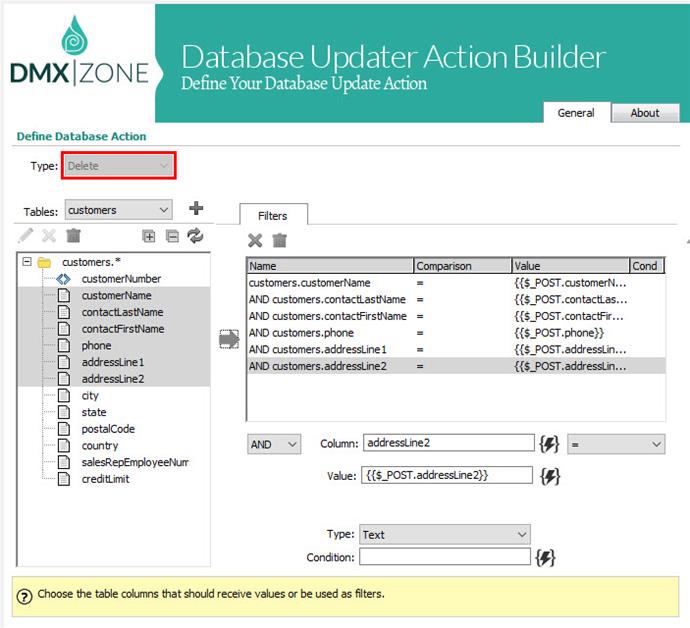
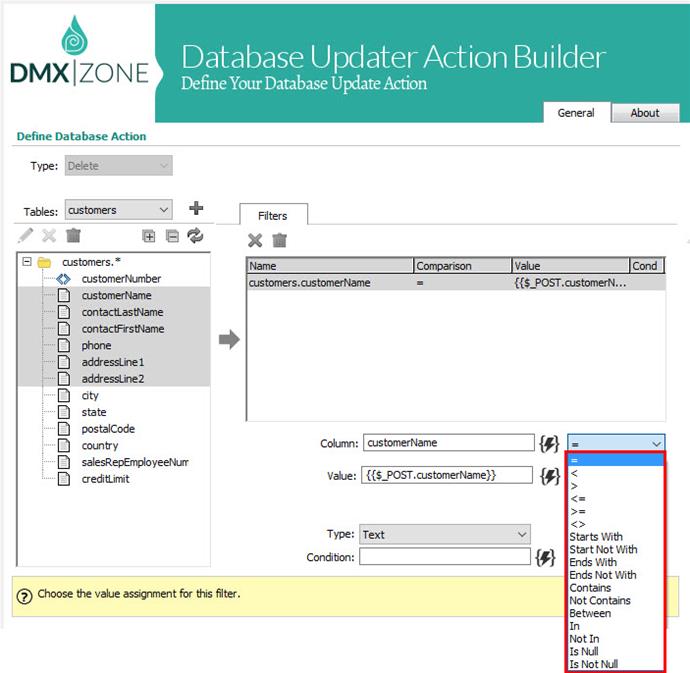
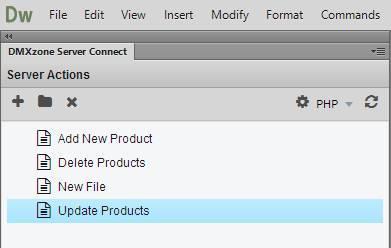
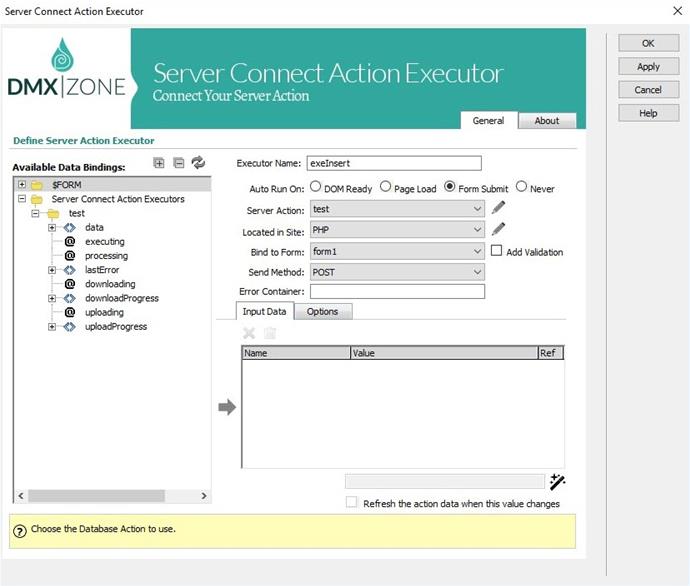
 George Petrov is a renowned software writer and developer whose extensive skills brought numerous extensions, articles and knowledge to the DMXzone- the online community for professional Adobe Dreamweaver users. The most popular for its over high-quality Dreamweaver extensions and templates.
George Petrov is a renowned software writer and developer whose extensive skills brought numerous extensions, articles and knowledge to the DMXzone- the online community for professional Adobe Dreamweaver users. The most popular for its over high-quality Dreamweaver extensions and templates.